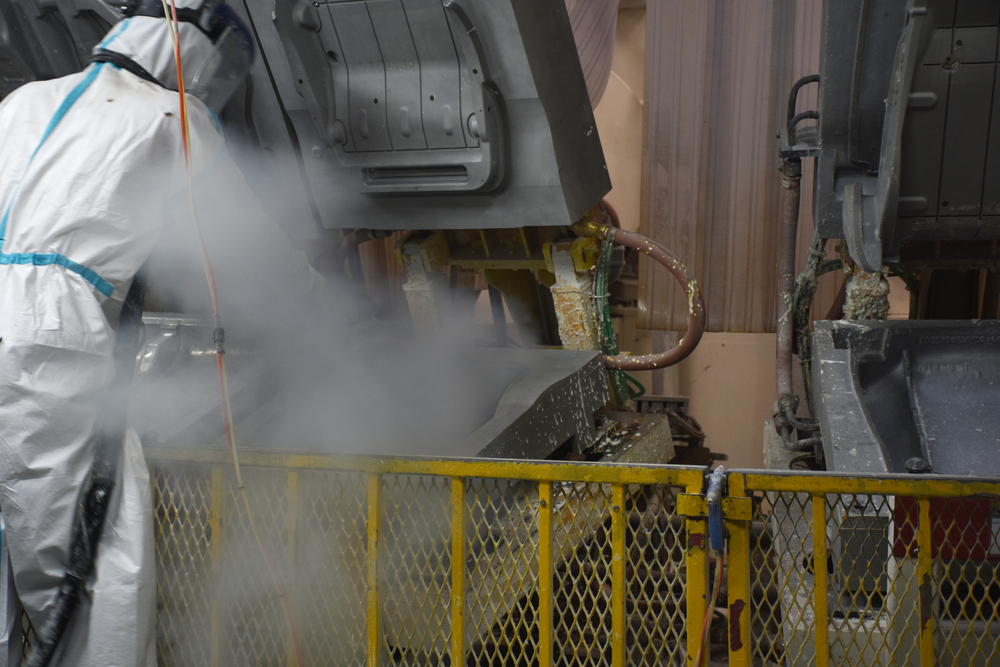In the most recent data from the National Marine Manufacturers Association, the US marine industry is estimated at $42 billion.
If you’re a boat owner, can you guess how many boats that equates to in the US? If you thought around 300,000 units, you’d be correct.
Boating is a delightful pastime that thousands of Americans love. The only downside is boat cleaning. Sadly every year, you feel achy after sitting for hours under the hull, trying to scrape off barnacles. Sound familiar?
Try dry ice blasting if you want to know a fast, affordable, and environmentally friendly boat cleaning method. Let us introduce you to dry ice blasting and how you can clean your whole boat in one day.
What Is Dry Ice Blasting?
Dry ice blasting is a technique used to clean boats, among other things. A high-pressure machine uses air to push out solid carbon dioxide pellets at high speed.
Then, as the pellets make contact with the object, it creates an ultra-cleaning effect. Depending on the dirt level of your boat, there are various dry ice blast machines.
For example, a two hose or venturi system will give 60 to 120 m/s while a single hose will give double. If the hull of your boat is covered in barnacles, you might need an upgraded nozzle, such as the supersonic.
How Does Dry Ice Blasting Work?
A dry ice blast will have an effect in three ways. First, as the solid dry ice pellets hit the boat’s underside, it will crack the infected areas’ barnacles. This is called a kinetic effect. However, fear not because dry ice blasting will not cause any damage to the ship at all.
Then after the barnacle has cracked, the -78.5°C of the dry ice will make it fragile. As the dry ice hits the barnacle, it changes from a solid pellet into CO2 gas.
This natural reaction will cause a mini-explosion called sublimation to shatter and remove the barnacle. It will then fall to the ground, where you can pick it up afterward.
If algae or other substances are covering the underside of your boat, the dry ice blast will compress the particles. This compression will cause them to detach and fall.
Boat Cleaning in a Day
Hull cleaning by hand is a tiring and tedious task. It can take anywhere from four to twelve weeks, and it’s hard labor. Traditionally, you would need to sit for hours with a scraper or a regular pressure washer to remove the substances.
But using a scraper and other pressure machines can cause damage to the boat. So, even if you are successful, you would need to sand and repaint the hull.
On the other hand, a dry ice blast can clean a 40-foot sailboat within eight hours. There is also be no need for sanding and repainting because it is a non-abrasive method.
Therefore, you’ll finish boat cleaning and preparation in less than half the time. Dry ice blasting can also be used on the sterndrive, wooden elements, plastic covers, and the swim platform.
Ice-Blasting Versus Other Media
One of the main benefits of dry ice blasting is that it doesn’t cause any secondary steps to the process. For example, if you sandblast, you would need to choose the correct sand type and clean it up afterward.
Sandblasted particles can become lodged in small areas and crevices of the boat. These particles will be a problem when you need to repaint the hull. Also, as we mentioned sandblasting can cause lasting damage, particularly to wooden elements.
However, when dry ice blasting removes a substance, it will fall to the floor. So, all you need to prepare beforehand is a plastic sheet. You can then gather the detached substances or barnacles and dispose of them.
Dry ice blasting will give a smooth, particle-free finish to your boat. Considering that dry ice blasting is also used in the nuclear industry to ensure 100% decontamination, you know your boat will be immaculate.
Better for the environment
Dry ice blasting doesn’t rely on abrasive chemicals and isn’t toxic. As a result, the system is friendlier to the environment.
As we mentioned, dry ice starts as recycled CO2 pellets and then turns into gas upon contact with the boat. As it is a natural gas, there is no lasting impact. And it doesn’t contribute to the greenhouse effect.
How Often Should I Dry Ice Blast My boat?
Experts recommend that you clean your boat’s hull every season for two reasons. To begin with, you’ll notice that plant life, aside from barnacles, will attach itself.
So, if you don’t clean your hull, this will lead to more friction. Which, in turn, means the boat will require more fuel. Also, if you travel on your boat without cleaning it, you may be causing fouling.
Fouling is where non-native sea life hitchhikes a ride on your hull. You then carry it with you to different waters. As the sea life isn’t a native, it can cause severe damage to the local ocean ecosystems.
Dry Ice Blasting Every Season
Keeping your boat clean throughout the season will ensure that it remains ready to sail. A small investment into dry ice blasting will give you a lifetime of boating pleasure.
Nowadays, boat cleaning doesn’t have to be a painful chore. Instead, put the fun back into it and be done in a day.
We’re happy to talk to you about how dry ice can work for your boat care needs. So, contact us for a marine service quote today.





